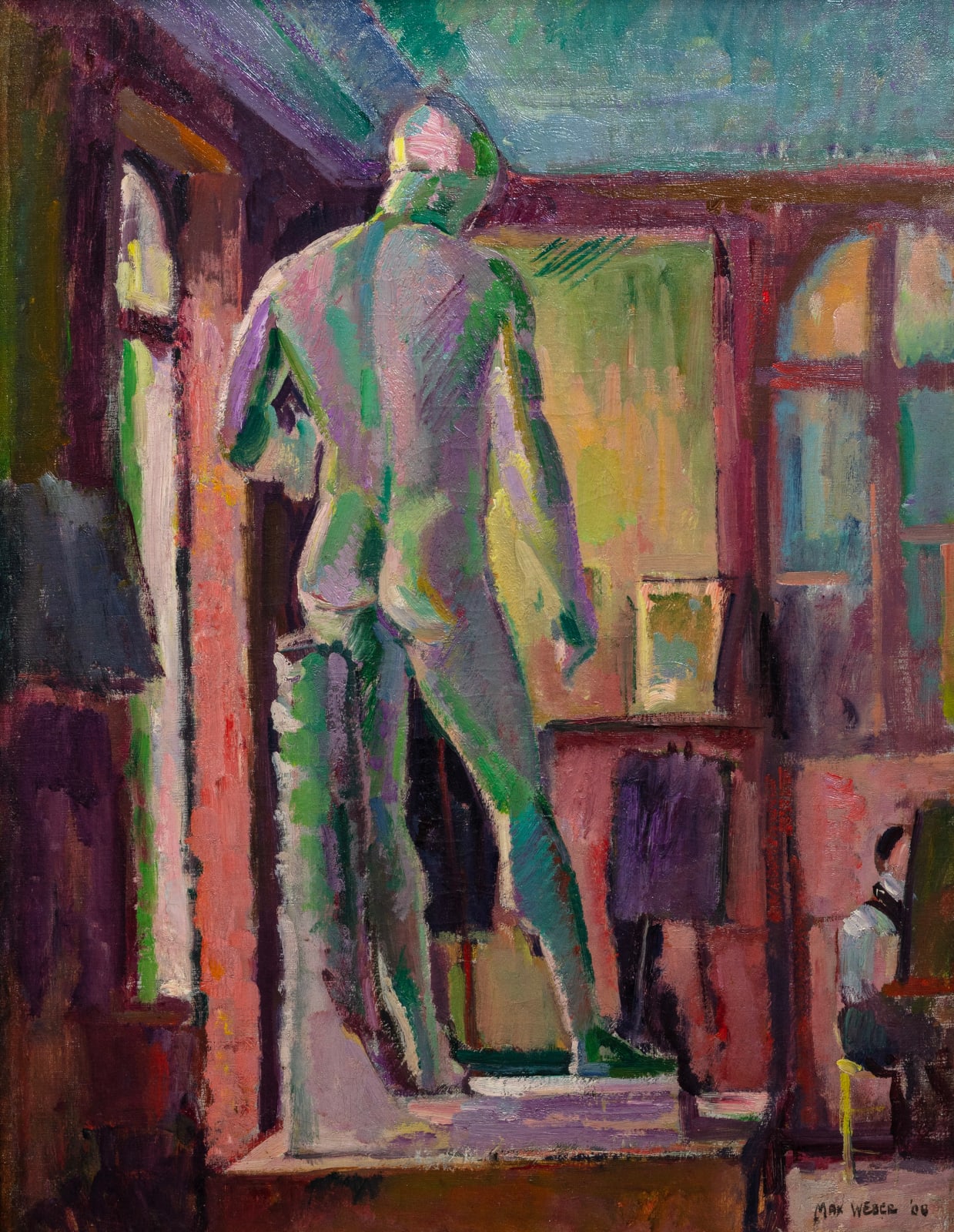Max Weber American, 1881-1961
58.4 x 47 cm
Schoelkopf Gallery is the exclusive worldwide representative of the Max Weber Foundation.
Max Weber painted The Apollo in Matisse's Studio, in 1908, the same year Weber returned to New York from Paris, bringing with him the innovative language of Cubism he had encountered abroad. Weber's journey to Paris in 1905 marked a turning point in his artistic career. Initially enrolling at the prestigious Académie Julian, he soon grew disillusioned with its rigid academic approach. Alongside fellow American artist Patrick Henry Bruce, Weber sought a more progressive environment, eventually persuading Henri Matisse to open his own school. Matisse established his informal classes in an abandoned monastery, the Couvent des Oiseaux, where he had maintained a studio for two years. The school attracted a few students, including Weber, Bruce, and prominent American art patrons Leo and Sarah Stein, relatives of the famed Gertrude Stein. Matisse's curriculum was eclectic, covering various topics from African sculpture to archaic Greek art and Cézanne's explorations in perspective. The education Matisse provided emphasized a rigorous study of nature and form as a foundation for exploring more avant-garde styles.
A notable feature of Matisse's teaching was his use of a cast of the ancient sculpture The Apollo of Piombino, placed in a prominent niche in one of the primary classrooms. Matisse frequently referred to the sculpture during his lessons as he admired the early classical Apollo for its clarity of form, which resonated with his preference for simplicity over intricate anatomical detail. Matisse encouraged his students to move beyond the prevailing Impressionist style. This philosophy is vividly reflected in Weber's The Apollo in Matisse's Studio, where one can see the influence of Matisse's teachings in its bold simplification of the human form and vibrant color palette.
Though Weber and Matisse's time together in Paris was brief, the impact of Matisse's mentorship on Weber was profound and lasting. This is evidenced by Weber's role in delivering the opening address at the Museum of Modern Art's Henri Matisse exhibition in 1951, a testament to the enduring connection between the two artists. The Apollo in Matisse's Studio stands as a tribute to a formative period in Weber's artistic development and the lasting legacy of Matisse's visionary approach to art.
Provenance
The artist; toEstate of the artist, 1961; to
Max Weber Foundation, 2021 until the present
Exhibitions
Pennsylvania Academy of the Fine Arts, Philadelphia, In This Academy, April 22–December 31, 1976Arts Council of Great Britain, London, United Kingdom, The Modern Spirit: American Painting, 1908–1935, September 28–November 20, 1977, no. 34
The Jewish Museum, New York; The Norton Gallery and School of Art, West Palm Beach, Florida; The McNay Art Institute, San Antonio, Texas; Joslyn Art Museum, Omaha, Nebraska, Max Weber: American Modern, October 5, 1982–November 5, 1983, no. 11
New York Studio School of Drawing, Painting and Sculpture, "Académie Matisse," October 17–November 17, 2001
The High Museum of Art, Atlanta, Georgia; The Brooklyn Museum, New York, The Advent of Modernism: Post Impressionism and North American Art, 1900–18, 1986–87, no. 127
Hollis Taggart Galleries, New York, The Color of Modernism: The American Fauves, April 29–July 26, 1997, no. 90
Literature
Alfred Werner, Max Weber, New York: Harry N. Abrams, Inc., 1975, fig. 14, illus. p. 37Percy North, Max Weber: American Modern, New York: The Jewish Museum, 1983, p. 65, no. 11, illus. p. 25
Subscribe to our mailing list to receive updates from the gallery
* denotes required fields
We will process the personal data you have supplied in accordance with our privacy policy (available on request). You can unsubscribe or change your preferences at any time by clicking the link in our emails.

